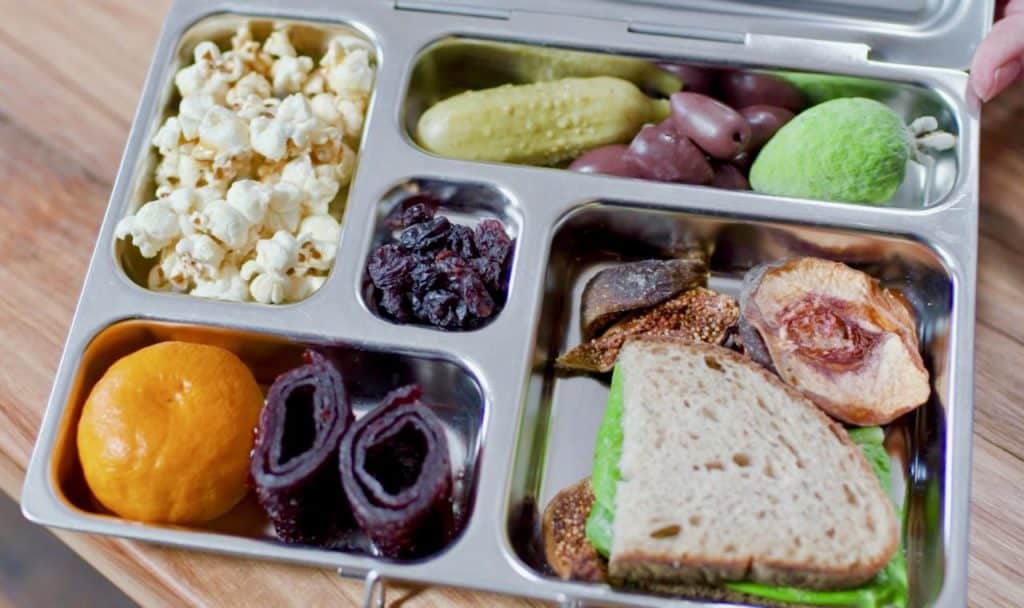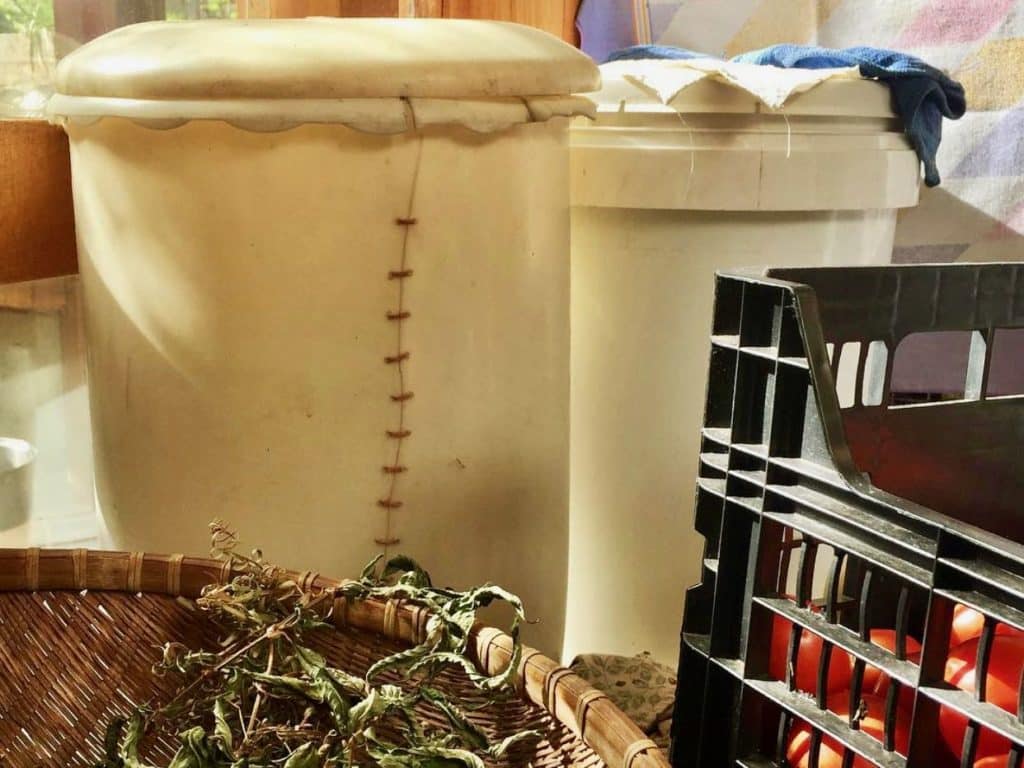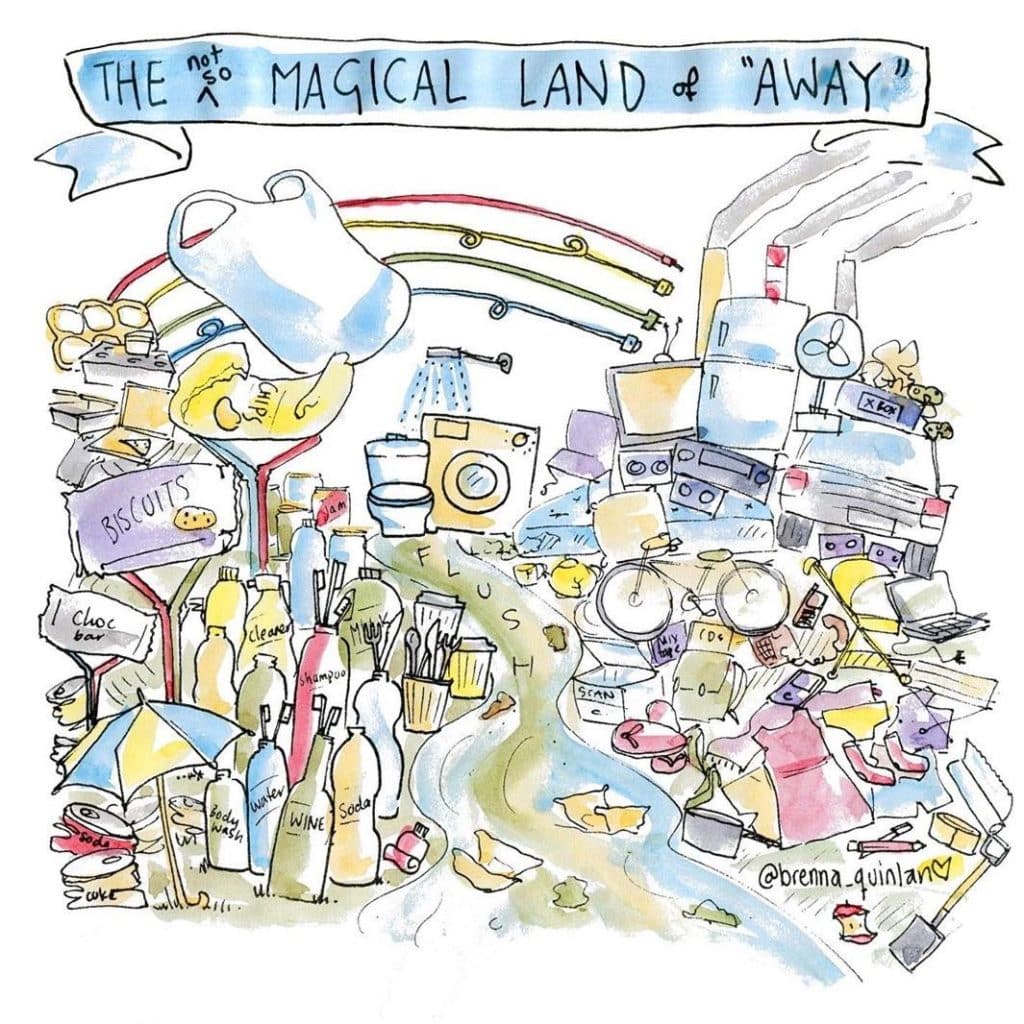Video: How to Do a 5 Day, No-Waste Challenge!
Author: Kirsten Bradley
Go to Source

It’s Plastic Free July! Are you up for a 5 day no-waste challenge, focussing on single use plastics? Of course you are! Here’s how to get started…
Before we begin, a word about plastics and privilege – here at Milkwood, we are NOT about motivating you via any sort of guilt trip. Nor do we assume that every single person out there has access to the privileges necessary to go ‘plastic free’ for five days.
It’s a simple fact that at this point in our society, going ‘plastic free’ and being able to access alternative, waste-free food choices, medicine, personal care and other items is definitely not something that everyone can easily do, for a range of reasons. Being able to go plastic free means you are inherently privileged. And that’s something we want to acknowledge, straight up.
However, if you CAN go plastic free – even if it’s for this 5 day challenge – we would suggest that you have a community and ecosystemic responsibility to do so. Both with your personal habits, and with your advocacy, too. Your choices affect your world, and also your community. So, do everything you can. Let’s get started.
Also…
It’s also important to remind ourselves straight up that many traditional cultures, indigenous peoples and the ‘make-do’ sectors of society are the original no-waste crews!
Like every other subject in permaculture and sustainable and regenerative living and design, we owe a great debt to these communities for stewarding this knowledge – we all can benefit from it.
Ok, let’s start at the start… why go plastic free?
Single use plastics infiltrate our everyday lives in all sorts of ways – and it’s really quite difficult to avoid them, unless we make a conscious effort. If it’s not the wrapping your lunch comes in, it’s the packet of pasta that you buy. Or the bag you get given at the checkout before you can even say anything. But where does all that plastic go? Into the bin, then into our landfills, rivers, lakes and oceans. Into our ecosystems. Where that plastic never, ever actually goes away – it just breaks down into smaller and smaller bits, to cycle through our ecosystems as microplastics, or it gets eaten by turtles or seabirds or other wildlife.
There’s even a natural phenomenon now called the great pacific garbage patch, in the ocean between hawaii and california, which is estimated to cover 1.6 million kilometers of ocean, and which contains over 80,000 tonnes of floating plastic waste. And all of this has come from households and industry throwaways, as our societies have chosen convenience over stewardship of our ecosystems.
So there is no such thing as ‘away’ when it comes to plastic. By throwing that wrapper in the bin, we’re just putting it somewhere else – and nearly always, somewhere that is doing damage to our planet.
So – clearly buying less single-use plastic is a very good idea. But not buying or acquiring any of it, at all, is not that easy. With this challenge, you’re going to need to look at your daily habits, and look at how you can change what you do, on an everyday level, to shoot for the goal of producing no waste.
Video: How to Do a 5 Day, No-Waste Challenge!
This video is one of 40+ lessons taken from our Permaculture Living online course – a 12 week program of new skills, habits and ongoing support – to enable you to kickstart your household + community resilience, and start living like it matters! You can join the waitlist for the next class here.
Plastic-Free Basics
On a basic level, this 5 day challenge is going to involve a few life hacks. Get yourself ready – you probably have all the bits at your home now, it’s just that they just need to come with you, each and every day.
Water bottle – this is a bit of a no-brainer, but still – how many times have you been caught out buying water, because you didnt bring a bottle? A re-used glass jar or plastic bottle works just as well as a fancy metal water carrier, though we pick up metal water bottles all the time in thrift stores, so it’ pretty easy to get one cheaply.
Reusable cup – these are everywhere these days, and also at thrift stores – so find one that you like and take it everywhere. At a pinch, a glass jar with a good lid works just as well as a fancy reusable cup, and you can even slip that into a stubby holder or koozie to provide insulation and make it smash proof.
Reusable bag – find one that you can roll up small, or that has its own pouch, and keep it in your handbag or daybag at all times. Always. Like, do not leave the house without at least one rolled up into the bag that you take with you everywhere.
Lunchbox – finding a lunchbox that you love and that works for you, can be a gamechanger when it comes to reducing waste – I’ve stolen my son’s lunchbox for today, to show you. We love ones like this, with little compartments so you can have different bits of food and snacks all in the one place, but separated out. This way all the food looks appetising, without getting mushed together with the action of the day.
I find that the nicer I make lunch look, the more likely I am to eat it all up and not get tempted by takeaway food – so without going crazy, take a moment to make yourself a tasty box of goodness.
Out and about, and don’t have your lunchbox or cup on you? Take a minute or two to find lunch somewhere you can sit down and drink or eat out of a non-disposable bowl, plate or cup. This might add 5-10 minutes to your day, but it means a bunch less rubbish that you’re responsible for creating. Plus, you’re supporting a cafe, noodle house or other business that provides a no-waste eating option, which is super important to have, in any community.
Household level things
Buying groceries is another place where a lot of single use plastics come into our homes – so figure out what your options are here – is there a bulk food store near where you live, or near where you work? Can you buy pasta and sultanas in bulk from there, and bring your own jars or bags?
How about meat – do you have a butcher you can source meat from instead of the pre-wrapped supermarket meat portions? And, if you take in a clean, reusable container, will they put your sausages directly into that instead of a single use plastic bag? It never hurts to ask. And, the more feedback they have, and people like you asking for produce without single-use plastic, the sooner they will be encouraged to offer this as an option. This goes for your grocery store, too.
What about your veggies – is there anywhere you can get your veg from where it doesn’t come in packets, or bags? Sometimes this is as simple as taking produce bags to your supermarket – these are easy to make, super lightweight, and you can even put them through the scales at checkout.
At home, there’s lots of ways to avoid single use plastics – for the duration of this challenge, and also way beyond. Get yourself some beeswax wraps that you can use instead of plastic wrap for wrapping cheese and covering leftover bits – there’s a link below for how to make these yourself.
There’s lots of other ways you can avoid or lessen single use plastics at home – learn to make your own yogurt, bake your own biscuits, or learn to make your own nori rolls. Think about what you buy to eat on the regular, and how you could make that yourself instead, without the packaging. Start with one thing that you buy regularly, learn to make that, and then work out from there.

Use what you already have
So – one aspect of this zero-waste challenge is definitely about limiting, or eliminating, single use plastics coming into your hands. But there’s another aspect here to think about, too. And that’s the plastic that you already have.
This challenge is not about ridding your house of it’s existing plastic bits and bobs. This challenge is not about going out and spending a bunch of money on shiny glass jars and metal lunchboxes so that you can look like you’ve never used plastic in your life. Infact, we encourage you to actively do the opposite. Use what you have, start where you are, and do what you can.
If you’ve got plastic bags in your cupboard, re-use them. Wash them out if you need to, peg them up to dry, and use them again. And again, and again. The same for any plastic containers you have – figure out what they’re most useful for, and use them. And re-use them. This is true low-waste, and no-waste living. Using what you have, rather than chucking imperfect stuff away.
Once your plastic items break, figure out how to responsibly deal with them, as best you can. Small bits of plastic can be poked into plastic bottles to make a building material called eco bricks. Larger plastic items can sometimes be responsibly recycled. Take on responsibility for the plastic and waste in your household, and in your daily life. This is what this challenge is about.
Once you take responsibility for your plastic use, all of it, you may well find yourself shifting – in lots of ways – when you’re making new purchasing decisions. Small decisions, and big ones, too.
Advocating for less plastic
There’s one more thing you should totally do during this 5 day challenge (any every other week, too) – use your voice! Which shops or suppliers do you regularly buy items from, which come in crazy plastic packaging? Call them. Email them. Tell them that you’d really like to see them using less plastic, and that you’re looking for alternative sources as a result.
These calls and emails add up, in a big way. AND effective advocacy adds up to climate justice and less plastic for everyone, so by using your voice you’re supporting your community, too. Do it.
Finally…
Most of all, at the end of this five day challenge you will be one step closer to the goal of producing no waste, and have learned a bunch of new skills, and maybe even made some new community connections, in the process.
There’s a bunch of resources for you to look at below, which will help, too. Let us know how you go, and good luck!

Resources
- Reducing & Reusing: Why Our Single-Use Packaging Habits Matter – why to
- Being Black And Zero Waste-Ish – great profile
- Making Beeswax wraps at your place – how to
- Environmental Racism and the Zero Waste Movement – great read
- No such thing as Waste – a song by Formidable Vegetable
- Zero waste as radical self-care
- Futuresteading podcast with Erin Rhodes on waste-free living with a twist
- Waste-Free Family Living, Lauren Carter and Oberon Carter – practical ideas involving the whole family – Booktopia
Video credits…
Thank you to Dylan, our videographer. Thanks to Charlie Mgee of Formidiable Vegetable, for the music used throughout. Thanks to Brenna Quinlan for beautiful illustrations, diagrams and titles. And thanks to all the rest of our team who helped make this Permaculture Living course and all its resources possible. You are awesome.
The post Video: How to Do a 5 Day, No-Waste Challenge! appeared first on Milkwood: permaculture courses, skills + stories.
